Japanese Curry is savory, warm, and easy to put together for a weeknight meal. If you are craving an easy curry dish, Japanese curry is the perfect recipe to try!
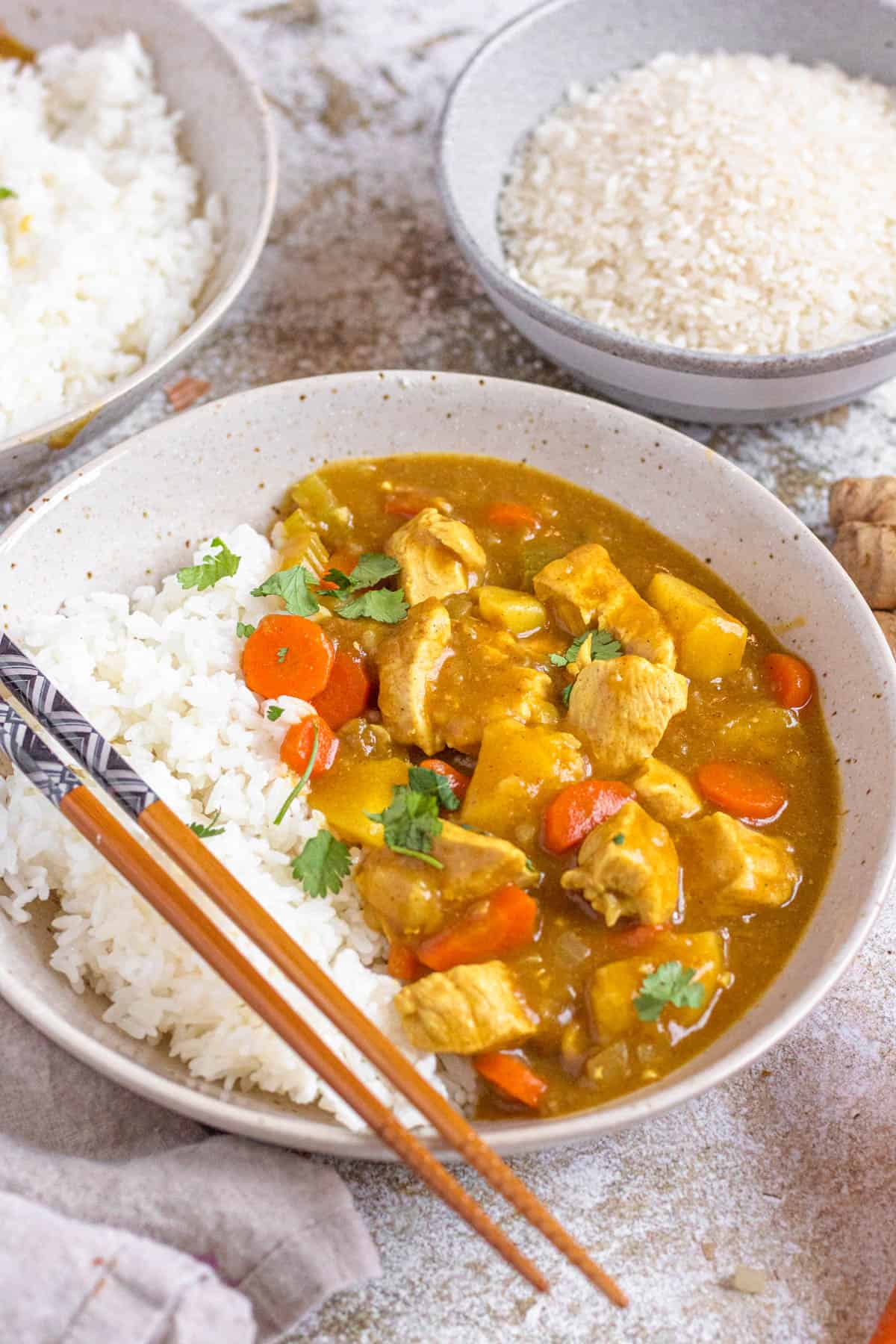
Hello Reader! I try my hardest to research recipes as best as I can before posting to ensure I am representing each culture correctly. If this recipe is from your country and I have made a mistake or you have suggestions for how to make it more authentic, I would love to hear! Please leave a comment below letting me know what should be different, and I will rework the recipe. It is always my intention to pay homage and respect to each cultural dish that I cook. Thanks for reading!
Just about every region of the world has its own version of curry, and Japan is no different. Everyone loves a bowl of warm, spicy vegetables and meat–but everyone has their own take on the best way to put it together.
Japanese Curry (aka Curry Rice, Kare Raisu, カレーライス) is one of the easiest to put together. It calls for very simple ingredients like carrots, potatoes, onion, and chicken. Add all of these staple ingredients together with spices that are pre-packaged in a cube form and you’ve suddenly got a meal that is flavorful, filling, quick and unforgettable.
This Japanese curry recipe can be put together in less than 30 minutes which makes it a great meal for a busy weeknight.
If you love curry from other countries, this Japanese version is a must-try. You may discover a new, simpler way to add a little spice to your weekly menu! But don’t stop there. This Beef Yakisoba recipe combines veggies with noodles and beef for a delicious, quick meal.
Recipe Origin
Curry came to Japan from English soldiers who had been inspired by dishes they found in India. The British navy invented curry powder which they brought with them on long voyages to add flavor to their dishes.
Curry consisted of meat, potatoes, and carrots, and the thick curry sauce was made with flour when the British adopted it, creating a meal that was delicious and full of hearty vegetables.
This dish was shared with Japanese soldiers during the Meiji Era and quickly became a crowd favorite. It was easy to prepare and fill enough to keep soldiers satisfied.
Before the introduction of curry, potatoes and carrots were not popular in Japanese cuisine and the recipe was considered a Western delicacy for many years until an 1860 cookbook shared the recipe.
Today you can find curry in restaurants all over Japan and many Japanese households make it at least once a week. It has become so popular that some consider Japanese curry to be their national dish.
Why Make This Recipe
- Savory: Japanese curry has a mild spice but it is still loaded with flavor that your taste buds will enjoy!
- Simple: This Japanese Curry Recipe is made with such simple ingredients that you can find in most grocery stores. No trip to an international grocery store is needed.
- Taste of Japan: Curry wasn’t born in Japan but this dish has been so loved by the Japanese that it can now be found all over the country.
Ingredients
Here is a visual overview of the ingredients in the recipe. Scroll down to the recipe at the bottom for quantities.
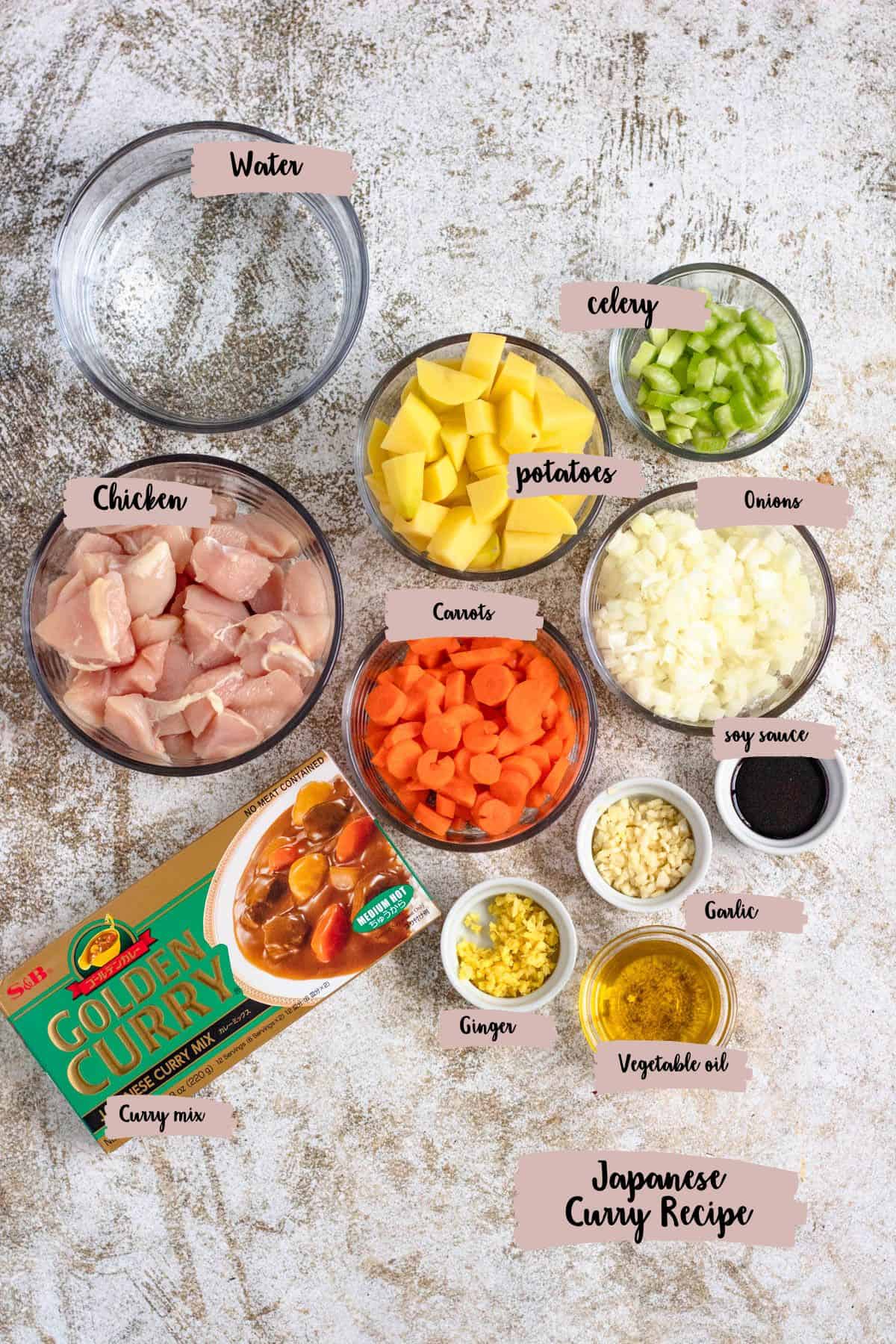
- Ginger & Garlic: Minced
- Celery Stalk: My recipe includes celery because I found a recipe online from KurumiCooks that had celery. However, many other recipes online do not. Feel free to omit this celery if desired.
- Chicken: You can use either chicken breast or chicken thighs. Chicken breasts will be slightly healthier and chicken thighs tend to stay juicer longer.
- Carrot Chunks
- Golden Potatoes: Golden potatoes provide the best texture for this recipe but you could use any kind of potato that you have on hand.
- Soy Sauce: Optional. See celery note above.
- Golden Curry: I’ve seen golden curry sold at my local grocery store and at Walmart. It comes in a box and the curry is divided into sections like a chocolate bar. It’s a golden brown color and smells delicious! You can also find it at Asian grocery stores.
- Steamed Rice: Short grain white rice for serving
Tools
- Large pot
How to Make This Recipe
Step One: Cook the Chicken and Veggies
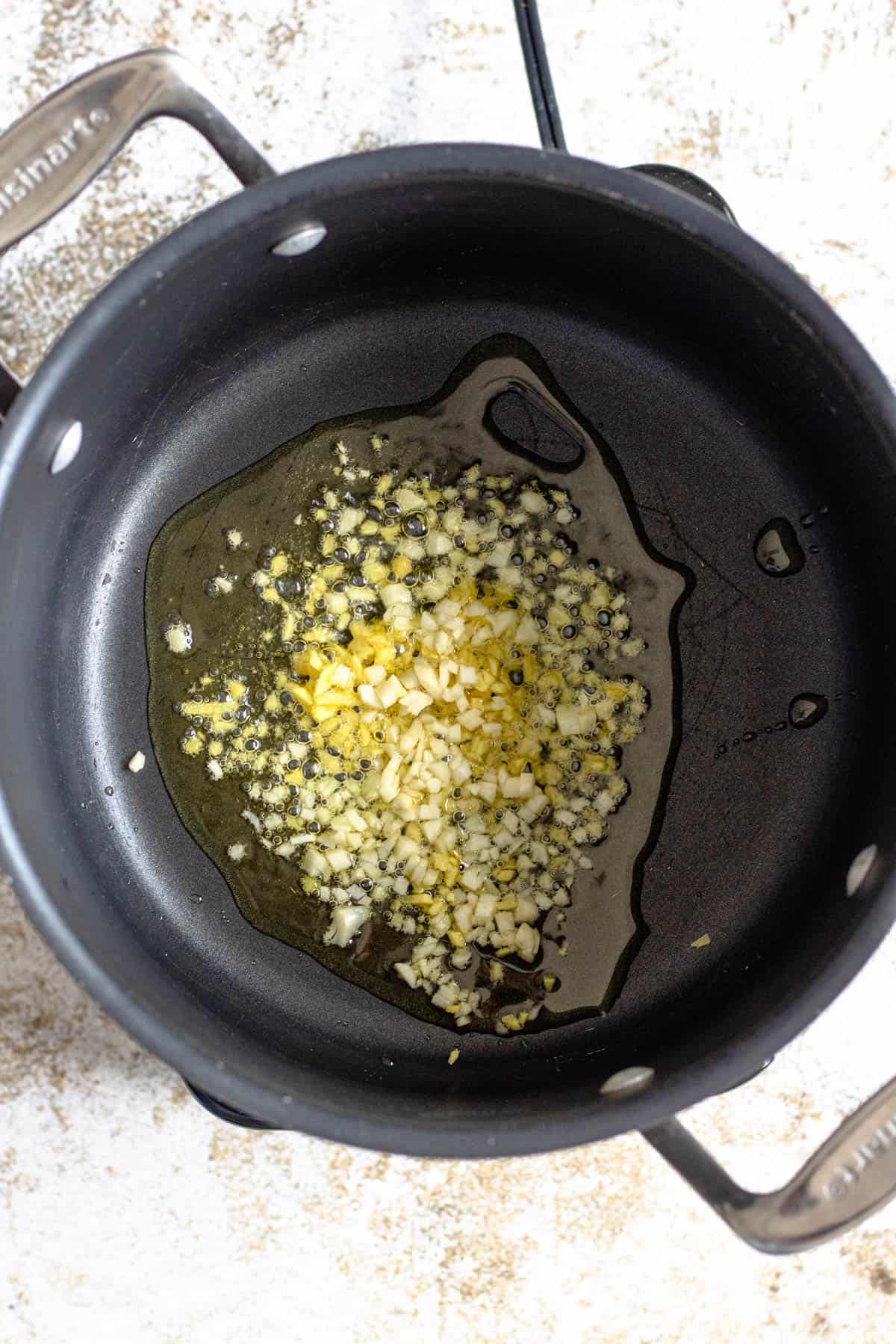
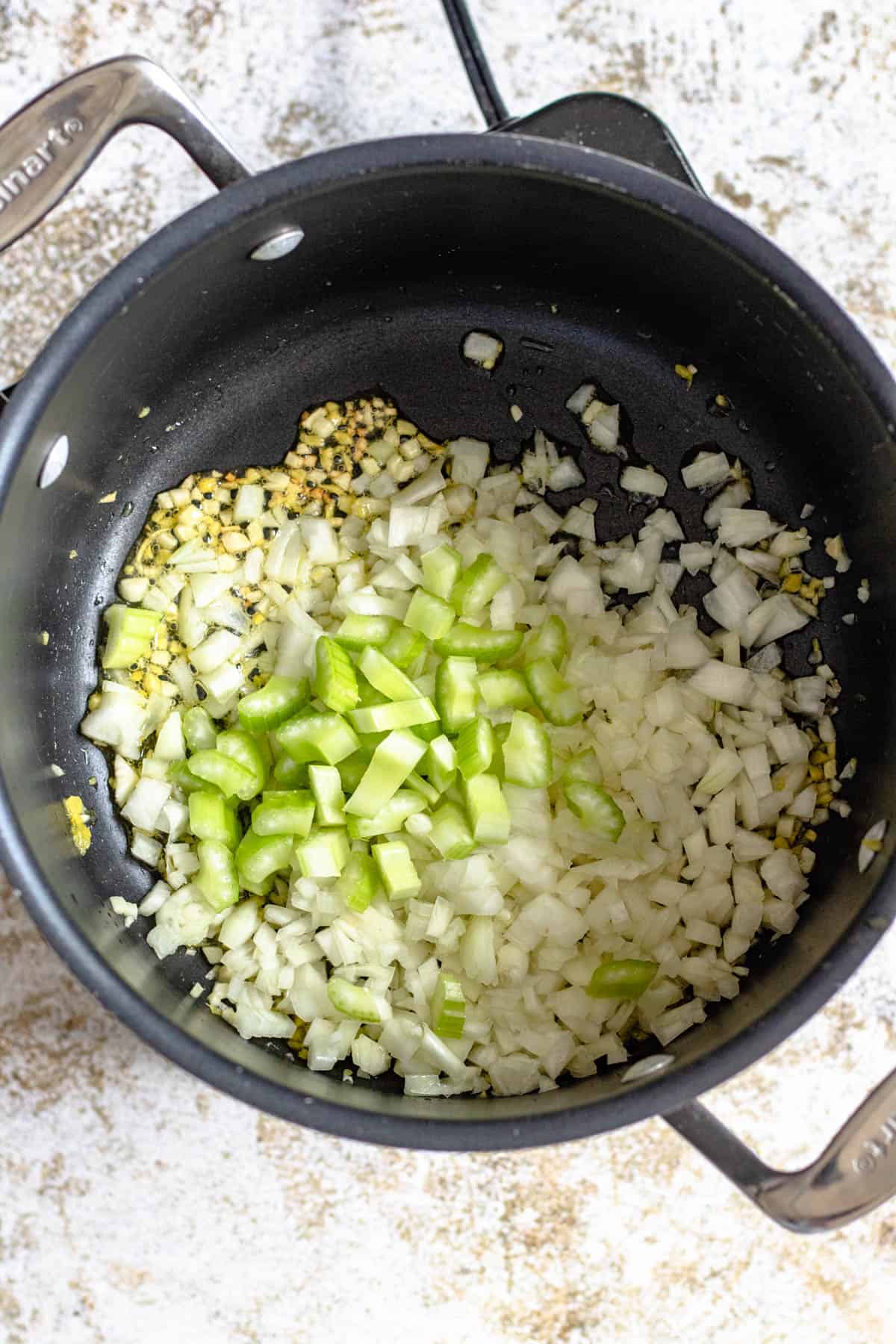
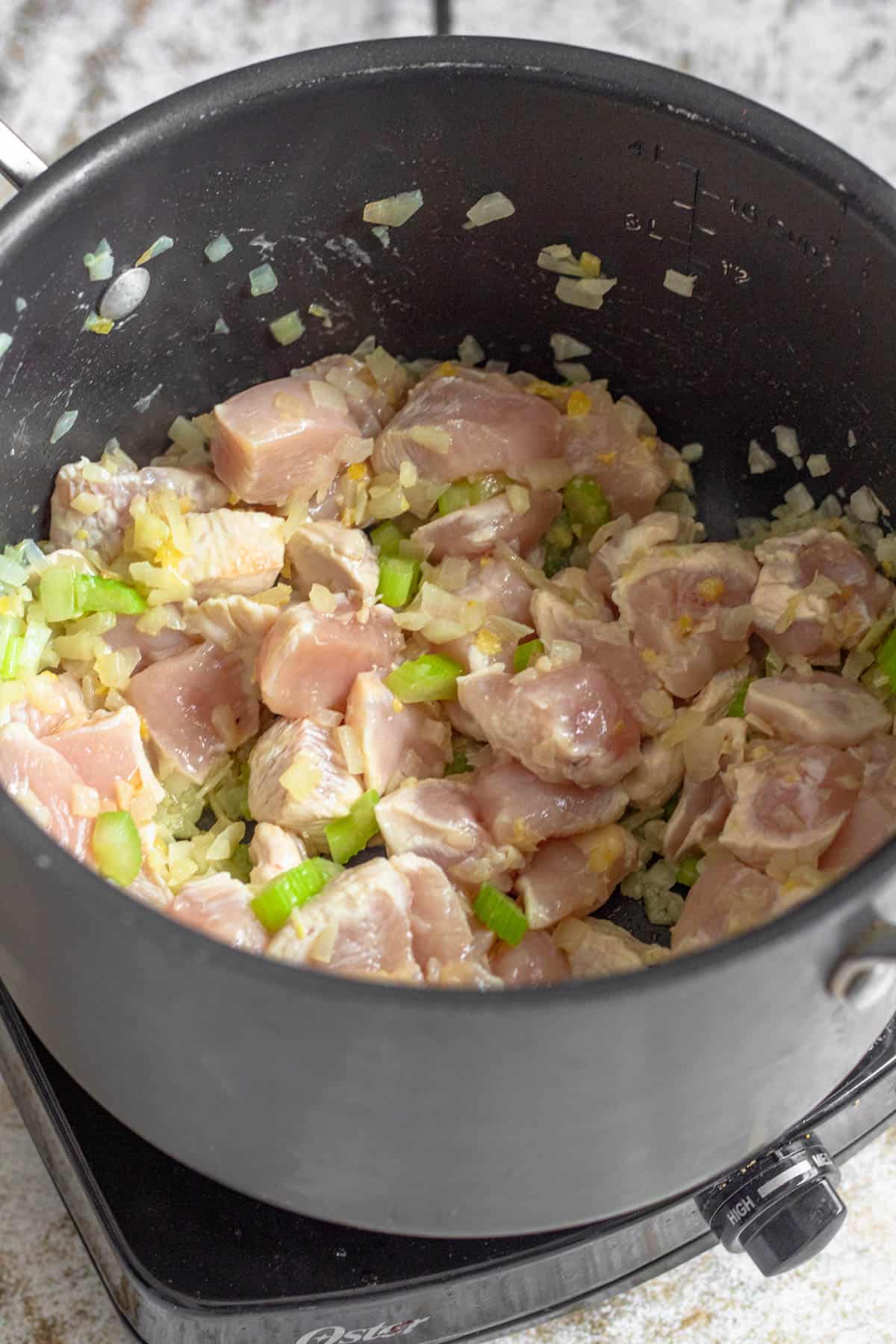
In a large pot, heat the vegetable oil until warm. Then add the ginger and garlic and stir for 1 minute. Add the onion and celery and stir for about 3 minutes until the onions start to turn translucent.
Add the chicken and stir for 2-3 minutes until the outside of the chicken is cooked but the centers are still raw.
Step Two: Simmer
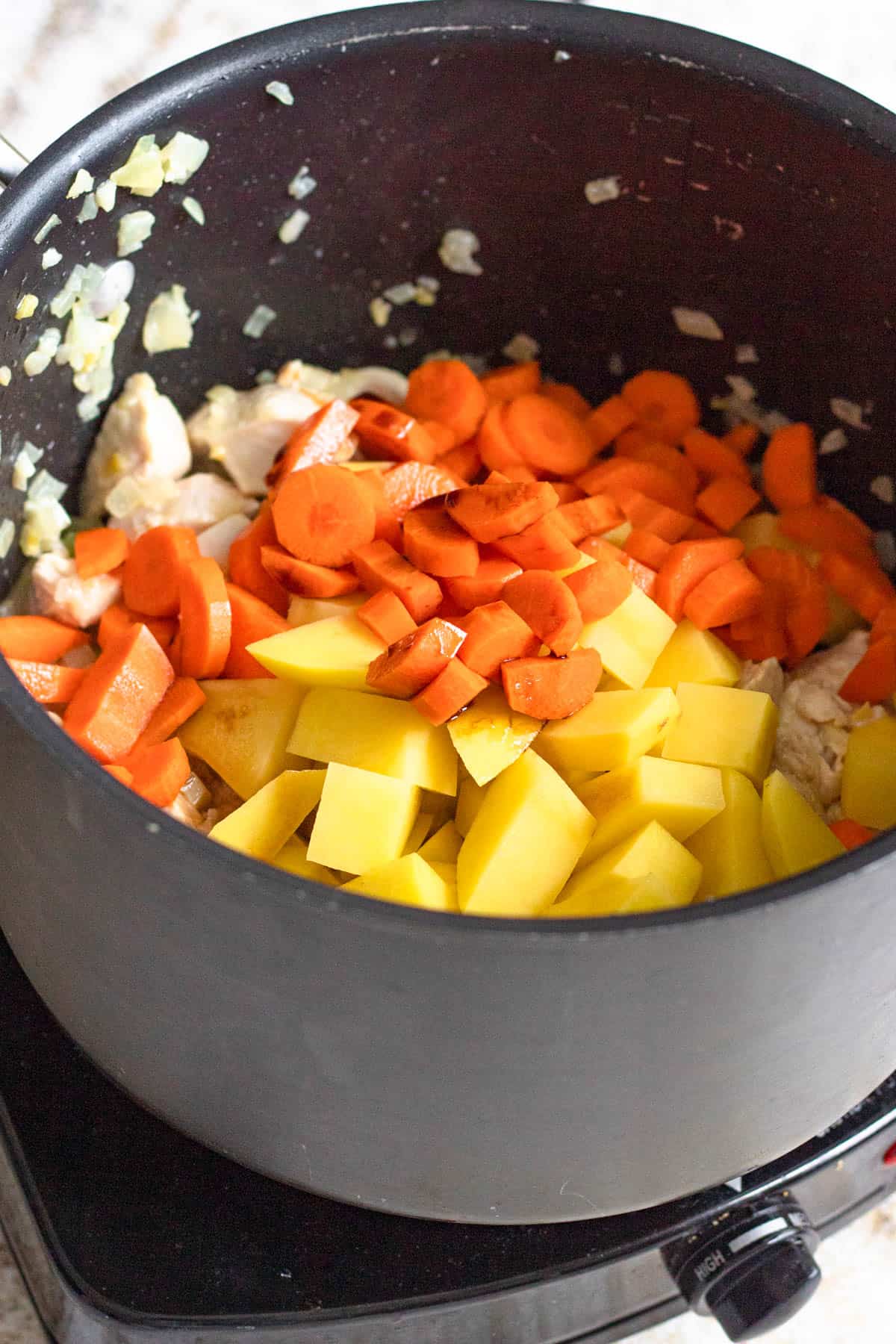
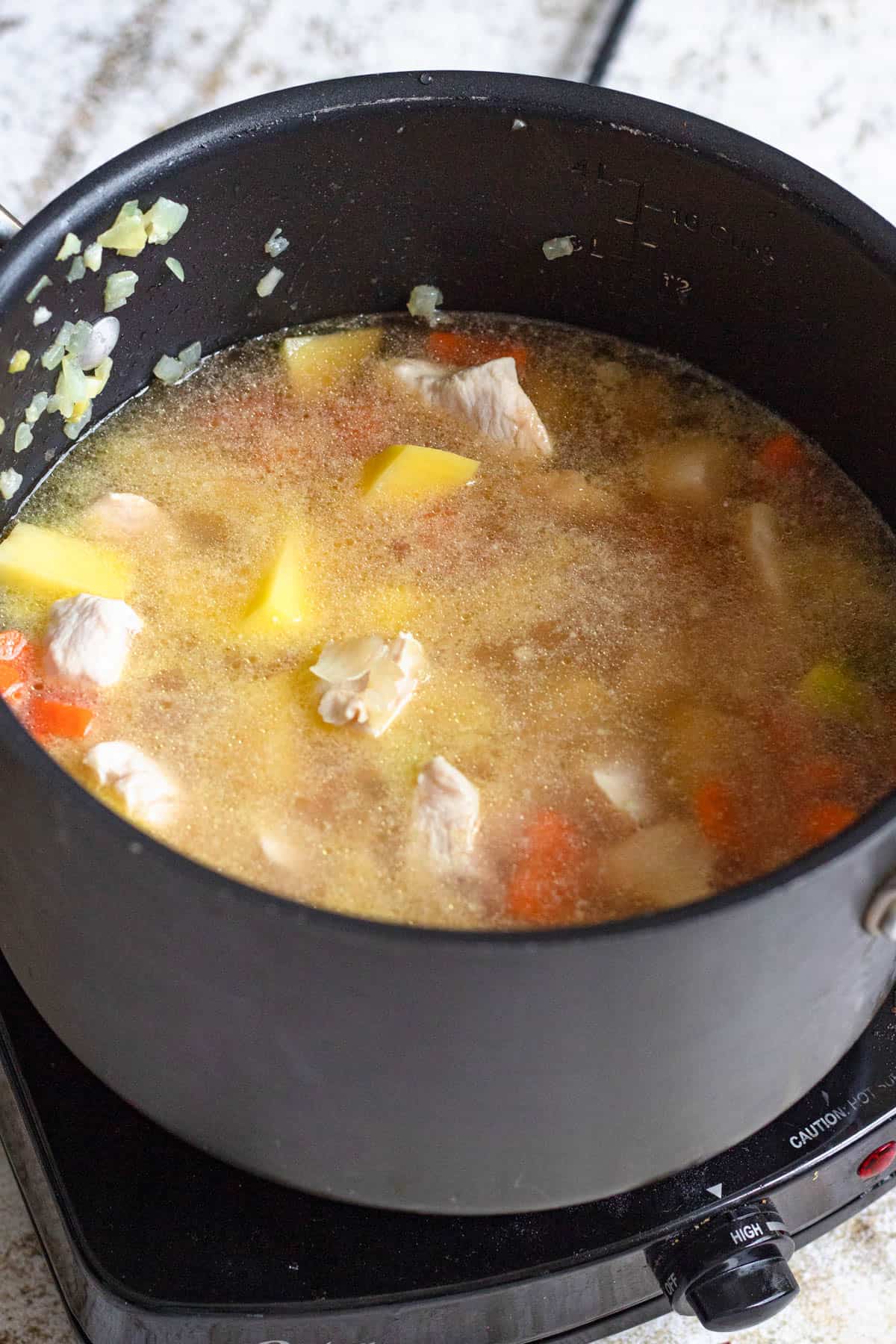
Add the water, carrot, potato, and soy sauce. Bring to a boil, then reduce to a simmer. While the water is coming to a boil, use a spoon to scoop off any film forming on the top of the water. Once simmering, cover and cook for about 15 minutes.
Step Three: Add the Curry
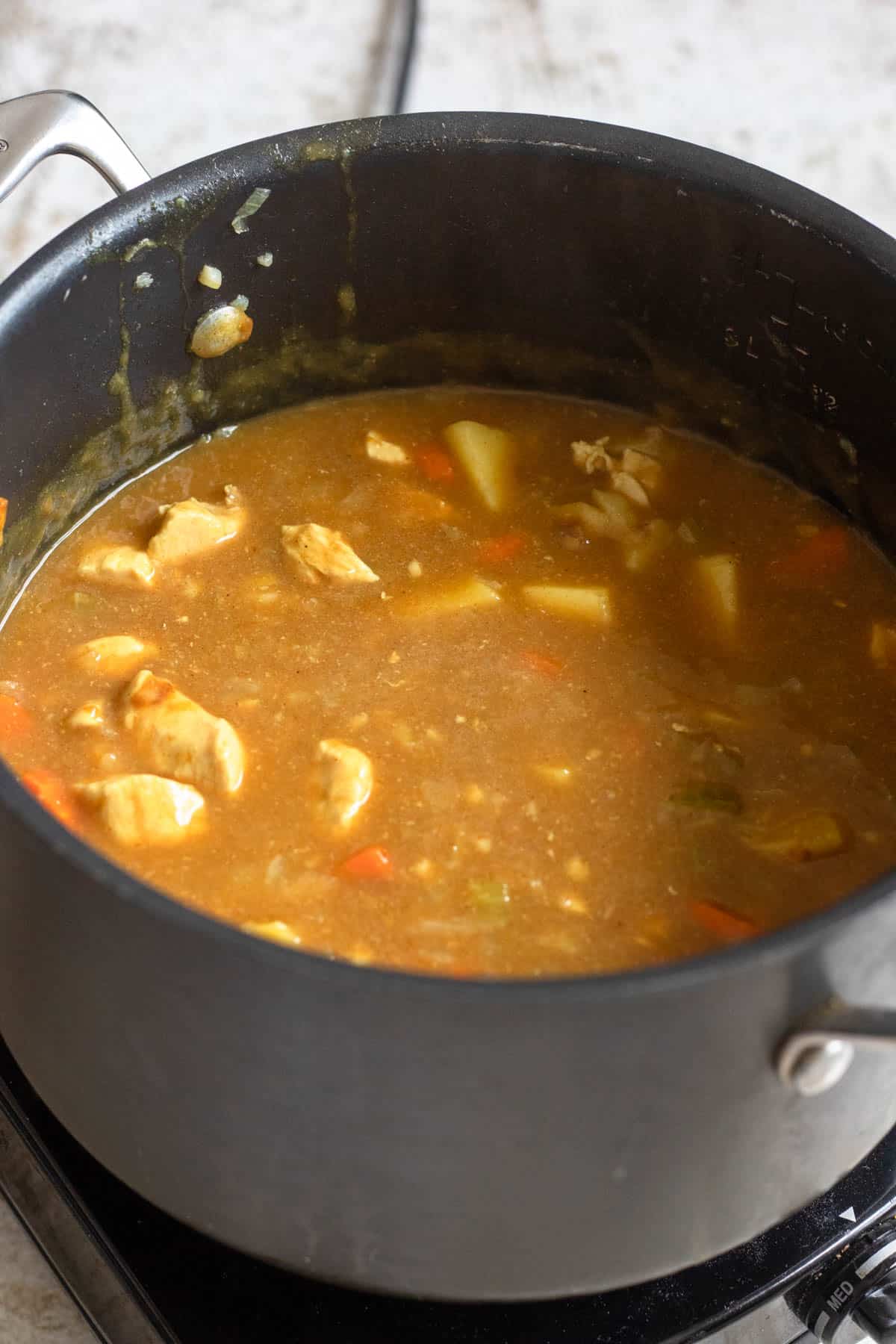
Add in the 6 pieces of curry, one block at a time. Stir to dissolve the one block, and then add the next. Mix well.
Simmer for another 5 minutes with the lid off, stirring occasionally to prevent burning, until the curry thickens.
Serve with short-grain Japanese rice and enjoy!
Researched using Kurumicooks, Audreysaurus, quangtran_superpumped, and Just One Cookbook
Expert Tips
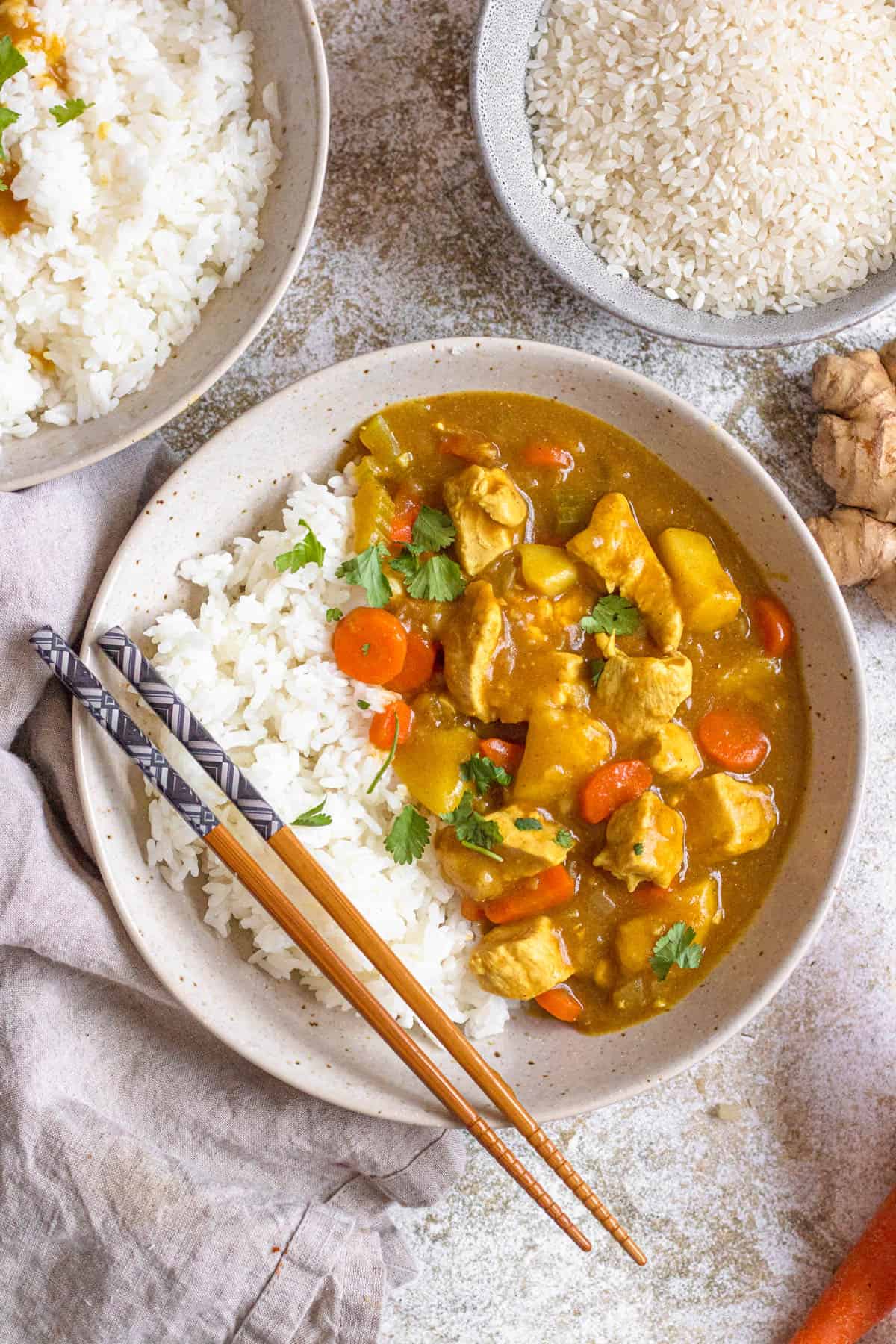
- Celery and soy sauce are optional. They are used occasionally by home cooks but not frequently. I added them because I saw them used in a few versions. You could also add green beans or green peas.
- Some versions of this recipe add a grated apple for sweetness and dark cocoa powder for depth and richness. Feel free to try these additions.
- This recipe calls for water but you could also use chicken stock.
- This version is made with chicken but you could also make this curry with beef or a pork cutlet. It is also popular to make chicken katsu for katsu curry.
Achieve the Right Amount of Spice and Salt
This Japanese Chicken Curry Recipe is significantly milder than Indian curries. While still full of great savory flavors, most of the heat is left out of Japanese curry. There are Golden Curry Bars that are labeled mild, medium, and spicy. Choose your preference, but keep in mind that the spiciest version of Japanese curry will be nowhere near as spicy as the curries of other countries like India or Thailand.
Your curry of choice may be too salty for your liking, or perhaps not salty enough. This is one reason why the recipe calls for water instead of chicken broth – so that you can control the salt content.
If you are sensitive to salt, try tasting your curry in between adding each curry block to make sure that your Japanese Curry Recipe is not too spicy or salty for you to eat.
FAQs

Japanese curry is served with white rice. Some restaurants also serve Japanese curry with a relish called Fukujinzuke.
Fukujinzuke is a red or brown relish made of white radish, lotus root, cucumber and eggplant. It is a little sweet and a little sour. You can find it for sale online if you want to make your curry truly authentic.
Yes, this dish makes excellent leftovers. Simply put it in an airtight container in the refrigerator and reheat when ready to eat.
Many people say Japanese curry is better the next day and some traditional chefs may even leave the pot to sit at room temperature overnight. While this does enhance the flavors, it also increases the risk of food poisoning so it is not recommended. If you want to see if leaving curry to sit helps the vegetables and meat absorb more flavor, let it sit in the fridge and not on the counter.
Japanese curry and Thai curry have many differences. Thai curry is made with coconut milk and a curry paste. The curry mixture itself is more liquid and very spicy.
Japanese curries have a much thicker consistency and do not have the added sweetness of coconut milk.
There is a great debate about how curry should be served. It is always served with rice but it is traditional to serve it next to the rice so each spoonful can be carefully measured with the appropriate ratio of sauce and rice. Ultimately both will be eaten together but it is considered polite to serve them side by side.
Did you enjoy this Japanese Curry Recipe? If so, make sure to check out these other recipes I picked out just for you:

Japanese Curry Recipe
Equipment
- Pot(s)
Ingredients
- 2 tbsp vegetable oil
- ½ inch ginger, minced
- 2 cloves garlic, minced
- 1 small yellow onion, chopped
- 1 celery stalk, diced, optional
- 1 ½ lb chicken breast , or thigh; about 2 large chicken breasts, cut into bite-sized pieces
- 3 ½ cups water
- 2 large carrots, peeled and cut into rounds
- 2 golden potatoes, peeled and chopped into bite sized pieces
- 1 tsp soy sauce, optional
- 6 golden curry pieces
- Japanese short rice, for serving
Instructions
- In a large pot, heat the 2 tbsp vegetable oil until warm. Then add the ½ inch minced ginger and 2 minced garlic cloves and stir for 1 minute. Add the small yellow chopped onion and diced celery and stir for about 3 minutes until the onions start to turn translucent.
- Add 1 ½ lb chopped bite-sized pieces of chicken and stir for 2-3 minutes, until the outside of the chicken is cooked but the centers are still raw.
- Add the 3 ½ cups water, 2 carrots cut into rounds, 2 choppted potato, and 1 tsp soy sauce. Bring to a boil, then reduce to a simmer. While the water is coming to a boil, use a spoon to scoop off any film forming on the top of the water. Once simmering, cover and cook for about 15 minutes.
- Add in the 6 pieces of curry, one block at a time. Stir to dissolve the one block, and then add the next. Mix well.
- Simmer for another 5 minutes with the lid off, stirring occasionally to prevent burning, until the curry thickens.
- Serve with short grain white rice and enjoy!
Notes
- Ginger & Garlic: Minced
- Celery Stalk: My recipe includes celery because I found a recipe online from KurumiCooks that had celery. However, many other recipes online do not. Feel free to omit this celery if desired.
- Chicken: You can use either chicken breast or chicken thighs. Chicken breasts will be slightly healthier and chicken thighs tend to stay juicer longer.
- Carrot Chunks
- Golden Potatoes: Golden potatoes provide the best texture for this recipe but you could use any kind of potato that you have on hand.
- Soy Sauce: Optional. See celery note above.
- Golden Curry: I’ve seen golden curry sold at my local grocery store and at Walmart. It comes in a box and the curry is divided into sections like a chocolate bar. It’s a golden brown color and smells delicious! You can also find it at Asian grocery stores.
- Steamed Rice: Short grain white rice for serving
- Celery and soy sauce are optional. They are used occasionally by home cooks but not frequently. I added them because I saw them used in a few versions. You could also add green beans or green peas.
- Some versions of this recipe add a grated apple for sweetness and dark cocoa powder for depth and richness. Feel free to try these additions.
- This recipe calls for water but you could also use chicken stock.
- This version is made with chicken but you could also make this curry with beef or a pork cutlet. It is also popular to make chicken katsu for katsu curry.




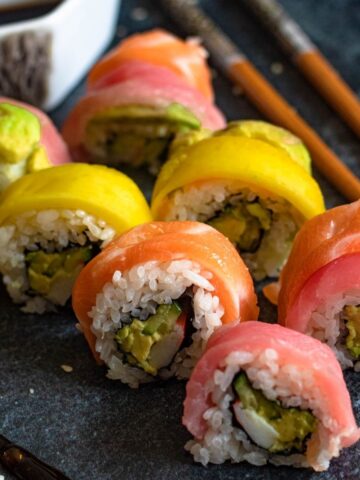
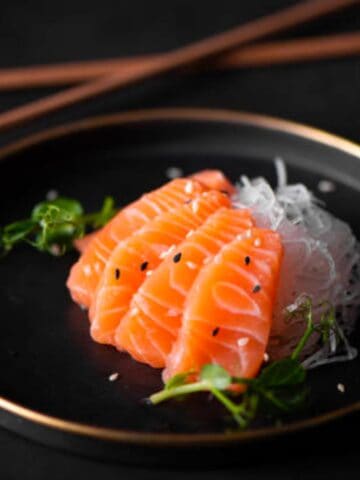
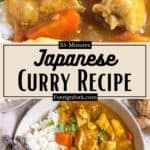

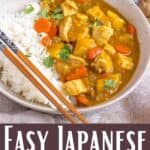

Clarence says
I made this with tofu and it was delicious! Didn’t realize that my package of curry only had five blocks. I think it definitely could have used one more. It was very easy to make and will be for sure adding it to my list of quick meals!
The Foreign Fork says
I’m so glad you liked it Clarence! That sounds delicious with tofu 🙂 Thank you so much for supporting my blog and giving a rating! <3